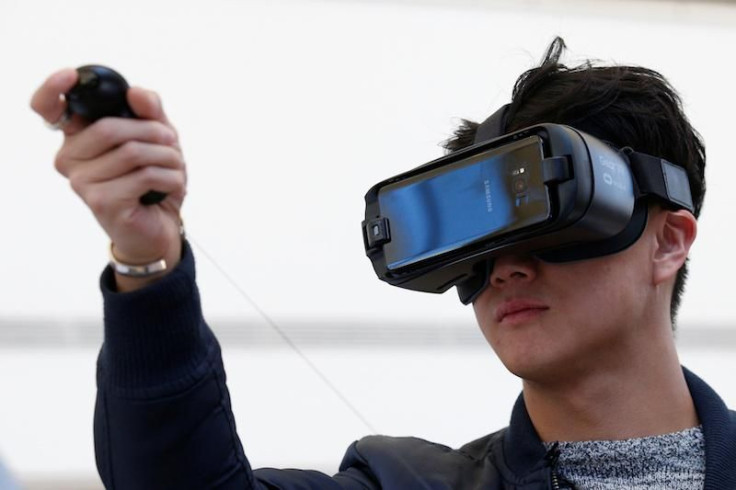Google Unveils New Standalone Virtual Reality Headsets At I/O 2017

Google's virtual reality offerings took a significant step forward Wednesday as the company officially confirmed its work on standalone virtual reality headsets during its Google I/O 2017 developers conference. Here's what Google unveiled for VR and augmented reality during I/O 2017 Wednesday and some of our takeaways:
Google Unveils New VR Headsets
Google's latest product in its Daydream line of VR hardware will be standalone VR headsets. Unlike current high-end VR headsets like the HTC Vive and Oculus Rift, the untitled headset will not need to be paired with a smartphone or desktop computer. Instead, you'll only need to put on the headset to start viewing VR content. In addition, you also won't need to install external tracking devices around the room. Instead, the headsets will feature positional tracking via Google's WorldSense system, allowing you to freely move around the virtual space in a game or app.
Read: Google I/O 2017: Google May Unveil New High-End Virtual Reality Headset, Report Says
Google has partnered with Qualcomm to lock down standards for the new VR platform and said upcoming consumer headsets from Lenovo and HTC will be out later this year. While exact specifications have yet to be confirmed for the headsets, Backchannel reported they are expected to be priced within a range comparable to the HTC Vive or Oculus Rift.
While major details about the headset are unclear, the announcement ties together a lot of Google's recent VR acquisitions and makes the company a more notable player in the VR space. On a functional level, positional tracking has been the next major area that VR companies want to figure out. For apps like games, not having to be tethered to a desktop computer or cable adds an additional degree of immersiveness. Along with Google, Microsoft's upcoming headset release will also feature positional tracking functionality.
The performance ceiling of the headsets also remain a significant question for Google to clarify. As with headsets such as the HTC Vive, being tethered to a desktop computer is inconvenient, but the dedicated hardware of a full-size computer makes higher-end gaming possible in VR. But as Backchannel noted, Google is also working on optimization tools — including a scheme codenamed Seurat — that could allow headsets to produce higher-fidelity graphics with less powerful hardware. While the Google headset will undoubtedly target a different audience than the Vive or Rift, its potential for gaming and other graphically demanding applications is worth monitoring.
Augmented Reality Demonstrated
Google has long said it doesn't consider virtual reality to be a direct competitor to augmented reality, considering the two complementary. At I/O, Google showcased the technology as part of its Visual Positioning Service, which functions as a GPS-like system for indoor areas.
Read: Google Lens Announced At I/O 2017 Keynote: Here's How It Works
In a demo, an onstage presenter showcased someone walking through a Lowe's. Using visual identifiers and other markers, the Positioning Service could detect items in the camera's field of vision and also guide the user to help find specific items. Google said the system is now available in select Lowe's stores and museums.
Google also showcased its Expeditions AR program as part of its educational outreach efforts. With Expeditions AR, students can use AR on smartphones to see and observe demos of tornadoes, asteroid fields or other phenomena.
© Copyright IBTimes 2024. All rights reserved.





















